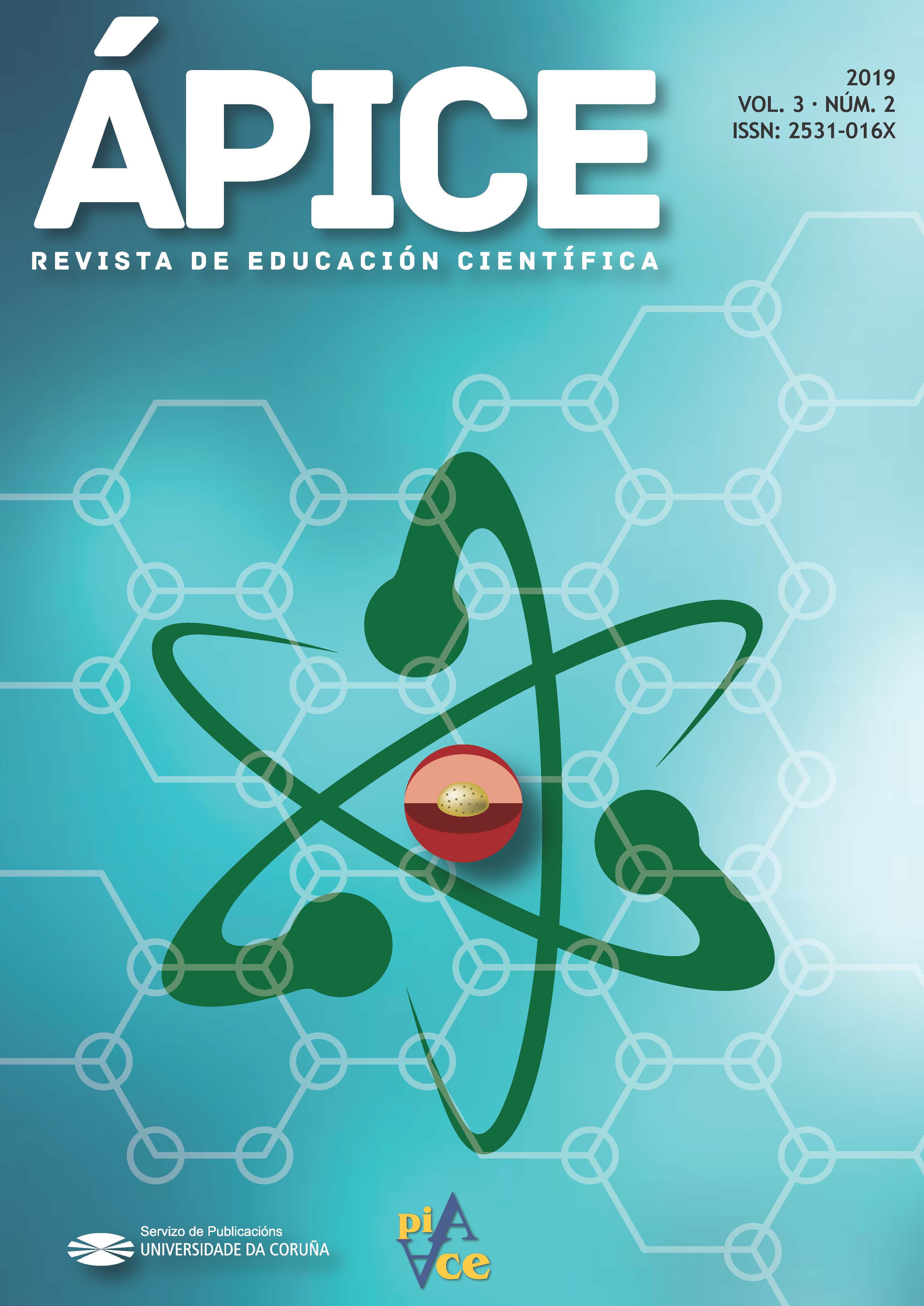The kinetic-corpuscular model and the scientific practices: a proposal based on thermal expansion
Main Article Content
Abstract
This article discusses the results of the analysis of an exam of four groups of 11-12 year-old students, two with an experienced teacher and two with a novice teacher. The use of key ideas of the kinetic-corpuscular model in drawings was analysed, as well as descriptions and explanations of thermal expansion phenomena. In the drawings, the representation of separation and movement of particles was recorded. There were more difficulties in the students whose teacher was novice, and more in doing them than in explaining what was observed in printed drawings. In the descriptions, there were students that only indicated what they saw, but others included the relationship of temperature and volume changes. In explanations, the use of key ideas of the model was recorded, and they were considered appropriate if the causality of the ideas was correct and its expression was consistent. Different levels of performance were detected, being better those of the students of the experienced teacher.
Keywords:
Downloads
Article Details
References
Achieve (2013). Next generation science standards (NGSS): For states, by states. Washington, DC: National Academies Press.
Adúriz-Bravo, A. y Izquierdo-Aymerch, M. (2009). Un modelo de modelo científico para la enseñanza de las ciencias naturales. Revista Electrónica de Investigación en Educación en Ciencias, 4 (3), 40-49.
Benarroch, A. (2000). Del modelo cinético-corpuscular a los modelos atómicos. Reflexiones didácticas. Alambique, 23, 95-108.
Domínguez Castiñeiras, JM., García-Rodeja Fernández, E., Illobre González, ML., Castro Fucci, M., García, S. y Rocha, A. (1996). La naturaleza corpuscular de la materia y su utilización en el campo conceptual calor y temperatura. Caderno Brasileiro de Ensino da Física, 13(1), 11-31.
Garrido Espeja, A. (2016). Modelització i models en la formació inicial de mestres de Primària des de la perspectiva de la pràctica científica. Tesis doctoral. Universidad Autónoma de Barcelona.
Gilbert, JK. (2010). The role of visual representations in the learning and teaching of science: An introduction. Asian-Pacific Forum on Sicence Learning and Teaching, 11(1). Recuperado de: https://www.eduhk.hk/apfslt/download/v11_issue1_files/foreword.pdf.
Hernández, M. I. y Pintó, R. (2009). Desarrollo iterativo de una secuencia de enseñanza y aprendizaje sobre propiedades acústicas de los materiales. Enseñanza de las Ciencias número extra, 3564-3568.
Izquierdo, M., Sanmartí N. y Espinet, M. (1999). Fundamentación y diseño de las prácticas escolares de ciencias experimentales. Enseñanza de las ciencias, 17(1), 45- 59.
Izquierdo, M. y Aliberas, J. (2004). Pensar, actuar i parlar a classe de Ciències. Per un ensenyament de les ciències racional i raonable. UAB. Servei de Publicacions. Departament de Didàctica de la Matemàtica i de les Ciències Experimentals.
Johnson, Ph., y Papageorgiou, G. (2010). Rethinking the Introduction of Particle Theory: A Substance-Based Framework. Journal of Research in Science Teaching, 47(2), 130-150.
Krajcik, J. y Merritt, J. (2012). Engaging students in scientific practices: What does constructing and revising models look like in science classrooms? Science and Children, 49(7), 10-13.
Lemke, J. (1997). Aprender a hablar ciencia. Lenguaje, aprendizaje y valores. Barcelona: Paidós.
Millar, R. y Abrahams, I. (2009). Practical work: Making it more effective. School Science Review, 91(334), 45-50.
Nebot, MR. y Márquez, C. (2017). Uso del modelo cinético-corpuscular en explicaciones sobre fenómenos naturales. Enseñanza de las Ciencias, nº Extraordinario, 4287-4292.
Osborne, J. (2014). Teaching Scientific Practices: Meeting the Challenge of Change. Journal of Science Teacher Education, 25, 177–196.
Postgate, J. (1995). Las fronteras de la vida. Barcelona: Ed. Grijalbo Mondadori.
Uchinokura, S. (2018). Students’ use of representation and particle models for dissolution. ESERA 2017 Conference, 400-411.


